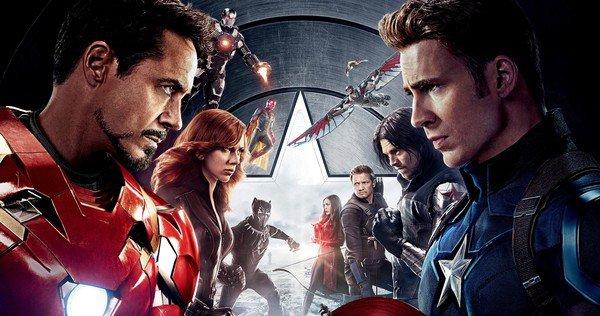Why America Will Never Tire of Superhero Movies
FTC Statement: Reviewers are frequently provided by the publisher/production company with a copy of the material being reviewed.The opinions published are solely those of the respective reviewers and may not reflect the opinions of CriticalBlast.com or its management.
As an Amazon Associate, we earn from qualifying purchases. (This is a legal requirement, as apparently some sites advertise for Amazon for free. Yes, that's sarcasm.)

Posted on May 25, 2016 by Natalie Morin
Hollywood thought young adult dystopian films were the next superhero franchises — and that gamble has cost it millions.
A mere four years ago, the first movie in the “Hunger Games” franchise made a whopping $421 million at the U.S. box office (inflation adjusted). Thereafter, movie producers everywhere raced to find the next big young adult dystopian cash cow. But hard as they tried, filmmakers could not recreate the initial success of "The Hunger Games" — not even in the final installment of the series itself, which saw almost a 50 percent drop in box office earnings.
PrettyFamous, a Graphiq site that visualizes entertainment data, illustrated the initial boom of "The Hunger Games", and how interest in other young adult dystopian films hasn’t nearly reached the same level.
One-offs like the adaptations of best-selling classics like “Ender’s Game” and “The Giver” didn’t grab audiences like their book counterparts. “The Maze Runner” series, which promised to be a different take on the dystopian genre — no central female lead, a post-apocalyptic plot — only made $81 million at the U.S. box office for its first film and another $81 million for its second. The third installment will premiere in 2017 — we’re not holding our breath. Only the "Divergent" franchise made a semblance of a splash, to the tune of $150 million for each of the first two films.
Next summer, “Ascendant,” — the fourth and final chapter of the "Divergent" series — will hit theaters, and the numbers say you’ll barely notice. Many had high expectations for the franchise following the success of “Divergent” and “Insurgent.” The following movie, however, only made $65 million earlier this year, a 40 percent drop.
Now Lionsgate and Summit are in a bind — they can’t scrap the finale of a preordained series, even though box office expectations are less than hopeful. That’s like ripping off the last page of a book, leaving the reader in a perpetual state of cliffhanging. Although the budget for the movie was significantly cut, the "Divergent" series will take its final gasp of air next year.
But why did Hollywood jump so quickly to marry itself to this new genre, knowing that it could very well be a fad? Sure, the success of “The Hunger Games” justified giving another series a shot, but committing themselves to three-to-four movies for each franchise was a huge gamble brought about by a small sample size of success. One explanation may be that producers hoped dystopian fiction would be the next superhero movie — a genre they worried audiences would soon grow tired of.
“There was constant discussion throughout our meetings about whether we are reaching a saturation point for too many superhero movies,” Michael Nathanson, media analyst for MoffettNathanson, told the IBTimes. “The comparison was made to other popular genres in movie history, including Westerns, and how those have fallen from any sure bets over time.” ("The Lone Ranger", the most recent Western reboot to flop, made a measly $80 million, despite costing about $250 million to produce.)
According to the data, however, the superhero genre is one that doesn’t need to be saved any time soon. In the early 2000s, the genre began to see some big hits, such as “Spider-Man” (Tobey Maguire, not Andrew Garfield) and Christopher Nolan’s critical darling, “The Dark Knight,” in 2008. But starting in about the year 2010, the large majority of superhero films saw consistent success above the $150 million mark.
The most recent example of the genre’s continued success is “Captain America: Civil War,” which made over $347 million domestically. The epic clash between two teams of Marvel superheroes, led by Iron Man and Captain America, respectively, proved irresistible to moviegoers around the world. In its third weekend of release, Forbes reported that the third installment of Marvel’s Captain America series has surpassed “The Dark Knight” in worldwide gross.
In fact, the only superhero-themed movies that fell below the $100 million box office mark in recent years were “Ratchet and Clank” (an animated video game adaptation) and “Turbo” (an animated film), as well as “Kick Ass 2” and the reboot of “Fantastic Four.” Notably, with the exception of “Fantastic Four,” all of these films are geared towards a younger and therefore relatively niche viewership.
Audiences have proved time and time again that they will still pay to see comic-book inspired films. Why? There a number of critical factors that aid their success.
Each film, despite being part of a larger series, can usually stand on its own. It doesn’t rely on cliffhangers and the success of its following three or four sequels over the next three years.
Most importantly, many of the best superhero movies don’t exclusively fit into what many know as a generic superhero genre. They all have widely different plots and themes. As CinemaBlend’s Conner Schwerdtfeger puts it, “‘Captain America: The Winter Soldier’ worked because it was a political thriller that happened to be populated by superheroes, while ‘The Dark Knight’ succeeded because it was a crime film at its core.”
While “Divergent” and “The Maze Runner” share similar dystopian tropes, “Deadpool” is a wildly different story than “Guardians of the Galaxy.” As long as directors focus on weaving compelling plotlines (that involve superheroes), these stories will continue to capture diverse audiences.


